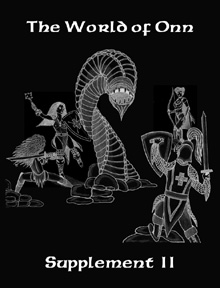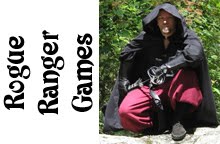I've been part of some of the bonus inflation discussions for Ability Scores over and over again. It's like the Level Limit discussions - someone posts their opinion on it and people come out of the woodwork either decrying or espousing why their camp is 'right', but little actual discussion happens. When Swords & Wizardry came out, I was on a backslide from my regular 3.5 group. I just can't get into 4e, it goes against my own personal preference so I went searching. I had a BFRPG game going for a while, and even an OD&D game going for a long time, but when I found Swords & Wizardry that little moment of clarity hit me: my game my way. As much as OD&D (I consider OD&D the original 3 booklets and Greyhawk, I have all of the little books but the others saw little use) was a framework, the aspects of the ability scores had little application in actual play other than for players to compare them against each other.
Move forward, each edition added importance in the form of adjustments, but each edition made the numbers larger and more important - the ‘bonus inflation’ mentioned earlier. 1e/2e AD&D made the largest blunder in this area by adding the % roll to an 18 Strength. Normal Men, the baseline all characters lives are measured against, have but 1-6 hit points. With a large enough % roll, rolling a ‘1’ for weapon damage could result in 6+ points of damage. Indeed, adventurers should be tougher than a common man, but 1-shoting low level opponents is a bit much, even if the high rolls for Strength and its accompanying % roll are rare. The Cook/Marsh B/X line used up to -/+3, not bad but at the higher end of the spectrum can be unbalancing. The 3.x editions bumped this higher with the highest rolled scores garnering a +4. Enter the retro-clones, moving back the clock in terms of rules and play. Through my small contributions to BFRPG’s 2nd printing I found Swords & Wizardry. Now S&W rolled back the clock almost to the beginning - the best adjustment was minimal - nothing more than -/+1.
In using the base of S&W and keeping the 3d6 bell curve, I wanted a slightly larger chance for adjustments but I was dissatisfied with the odd groupings of B/X and inconsistent groupings used by AD&D. Using the average group of 9-12, I came up with what I though would be a good set of adjustments for Onn:
3 - 4 becomes a -2 penalty
5 - 8 becomes a -1 penalty
9 - 12 remains average
13 - 16 becomes a +1 bonus
17 - 18 becomes a +2 bonus
Using a base grouping of 4’s provides a good spread of adjustments to ability scores. This also gives the players a chance for the adjustments on both ends of the scale. Technically, the lowest end of the scale is 1-4 and the highest is 17-20, but characters for the World of Onn can’t roll a 1, 2, 19 or 20. It is easy to figure out though, so getting drained to a 2 Strength by a Shadow, for example, won’t cause any confusion like it would in the Cook Basic Set or the character with a 17 Dexterity that dons a set of Gauntlets of Dexterity +4 and ends up with a 21, using the 4-point groupings it’s easy to figure out on the fly (21-24 is a +3).
This also is low enough not to impact the simpler play style of older games and their clones - simply put, you don’t need high stats or huge adjustments to do anything like you do in more modern games. This also has the effect of keeping any bonuses more important since they are less numerous and smaller than more modern games, as well as having a larger impact on other systems within the game.
More on that later though…
Sunday, December 20, 2009
Choosing the Best Ability Score Method for Your Game
Labels:
Ability Scores,
Onn,
Rules,
Swords n Wizardry
Subscribe to:
Post Comments (Atom)





No comments:
Post a Comment